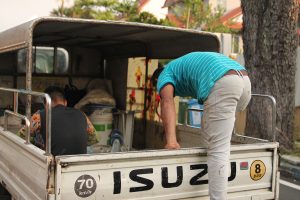Singapore is virtually the only remaining first-world country where it is legal for migrant workers to be ferried on lorries, a vehicle designed for cargo rather than passengers. The practice remains legal in Singapore, even as countries in the Middle East with large migrant worker populations, like Dubai, Abu Dhabi, Bahrain, and Qatar, have banned it.
Despite activists and NGOs advocating on this issue for the past 20 years, the Singapore government and industries involved have not shown any inclination toward banning this practice. Following the most recent lethal lorry accidents in July 2023, business chambers and associations issued a joint statement on why phasing lorries out is difficult, highlighting the complexities and costs involved.
The senior minister of state for transport echoed these concerns, explaining that a ban on lorries would put many companies out of business. To date, there has been no research into costs of alternatives nor a timeline for phasing out this mode of transport.
Their inertia is paradigmatic of Singapore’s culture of cheap labor, where low cost and competitive profits are prioritized over human lives and limbs. Unsafe transport is just the tip of the iceberg – migrant workers also suffer cramped living conditions, minimal amenities, and exploitative wages in Singapore.
This photo essay presents the experiences and perspectives of low-wage migrant workers, from the lorries they ride in to their dormitories and worksites.




















































